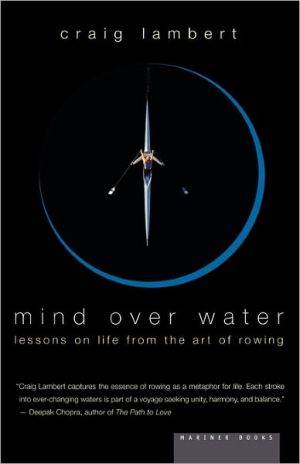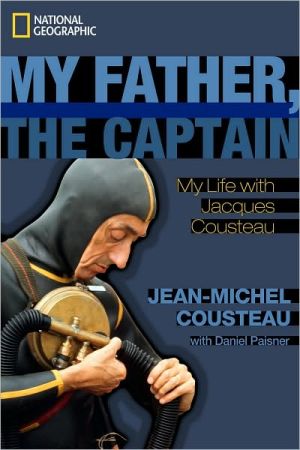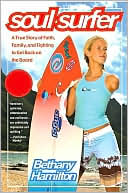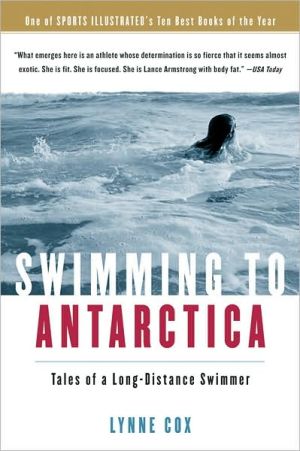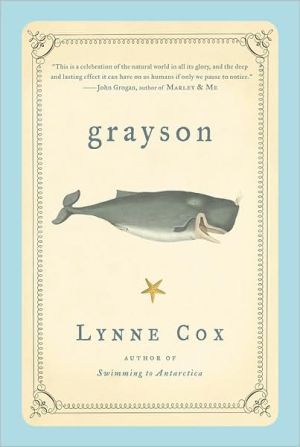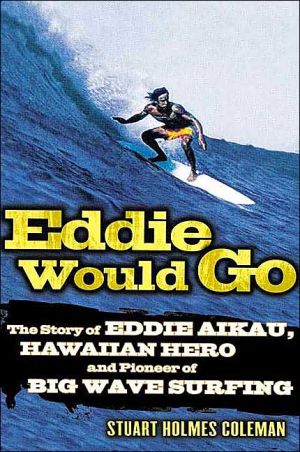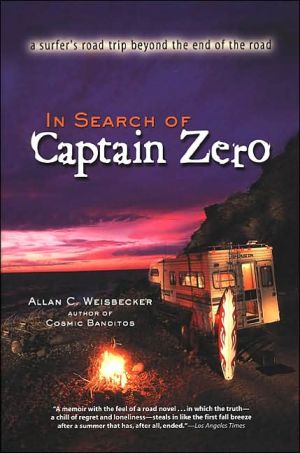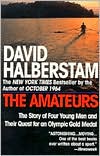Mind Over Water: Lessons on Life from the Art of Rowing
In this wise and thrilling book, Criag Lambert turns rowing—personal discipline, modern Olympic sport, grand collegiate tradition—into a metaphor for a vigorous and satisfying life.
Search in google:
In this wise and thrilling book, Craig Lambert turns rowing--personal discipline, modern Olympic sport, grand collegiate tradition, and fitness pursuit for thousands of men and women--into a metaphor for a vigorous and satisfying life. Skimming the plane where sky and water meet, rowers must fully inhabit the present moment, whether facing their demons in a single scull or discovering the paradoxes of teamwork and commitment in a crew shell. This is a book about balance, attaining consistency and speed, independence and cooperation, joy and creative powers. Filled with humor and imagination, Mind Over Water speaks to rowers and non-rowers alike. The New York Times Book Review - Caroline Knapp . . .[A] thoughtful, lovingly drawn meditation on . . .[a] brand of transformation. . . .This is no simple ode to the beauty of river and shell; nor. ..is it a chronicle of the sport's physical rigors. Lambert covers both those bases. . . .But even the heaviest moments are offset by light . . .
Chapter One \ In the long run men hit only what they aim at.\ Therefore, though they should fail immediately,\ they had better aim at something high.\ --THOREAU, Walden\ In the darkness, deep in silence, the lights -- green, red, a few of white -- surge ahead, in the rhythm of breathing. They seem, in fact, to breathe their way forward, gathering force on the inhale, then gliding forward on the outward stroke. Against the dark water and the shore, whatever propels these lights is indistinct, but their graceful flow suggests swans.\ Now one swan swims closer, and if this be waterfowl, it is ancient, prehistoric, fantastically long and narrow, a pterodactyl afloat. Its beak juts out ten feet or more, and the wingspan sweeps a tremendous arc, fifteen or sixteen feet across. Two wings beat together, a whoosh through the river water. As they emerge into air and recoil for another immense stroke, it becomes clear: these are no wings. They are oars.\ As waves of dread wash through my gut, I watch the colored lights from the ramp that leads from the boathouse down to the dock. Soon, red and green beacons of my own, attached to the bow of my boat, will float beside these others, just inches above the river surface. I am about to become the heart and muscle of one of these sleek water birds. How, I wonder, did I get myself into this predicament?\ It is 5:45 A.M. on an October morning in Boston, and both air and water are chilly. Already my hands ache with cold and I have yet to shove off from the dock; on the river, the frigid breeze will penetrate skin, flesh, and bone. That much is familiar: nothing more than intense, torturous pain. As a rower I am used to that. The terrifying thing is the athletic test confronting me: a double Head, something I have never attempted before and am not sure that I can even do, let alone do well. Performing well matters deeply, but today my first concern is staying alive out there. That, and the traffic.\ The phrase double Head first caught my attention several years earlier, in a snatch of overheard conversation that crystallized the vast gap between my rowing practices and those of the top athletes in the sport. Two members of my boat club, Kurt Somerville and Tiff Wood, had been chatting after a row. Kurt, a downtown lawyer, is a tall, lanky oarsman who rowed at Dartmouth and then made the 1980 U.S. Olympic team, those unlucky athletes Jimmy Carter made into spectators. Kurt's nickname is "Wedge." He explains: "a wedge is the simplest tool."\ Tiff Wood is another rowing tool; in college, his nickname was "the Hammer." Actually, many oarsmen have been called hammers, crew slang for rowers who lack finesse. Like ringer, the term hammer blends censure and praise: although hammers are crude implements, they can, of course, come in very handy. Tiff's untamed technique didn't stop him from becoming one of the great oarsmen of his era. After a spectacular career at Harvard, where his crews never lost a race, Tiff made the 1976, 1980, and 1984 U.S. Olympic teams and became one of the most famous names in rowing.\ As the two Olympians talked, I listened in disbelief as Kurt uttered four innocent-sounding words: "Tiff: Saturday -- double Head?"\ This simple phrase stunned me. Kurt was casually proposing that, on Saturday, he and Tiff go out in their single sculls and row a double Head piece together. To my ears, he might as well have said, "Tiff: Saturday -- climb Mount Everest?" On the Charles River, to row "a Head piece" means to row the full three-mile course of the Head of the Charles Regatta, a demanding endeavor that can take as little as fourteen minutes in an eight-oared boat or seventeen minutes in a single scull. It can also take well over twenty minutes. That doesn't sound so terribly long, but think of it as, say, running four or five consecutive four-minute miles.\ Actually, it might be even tougher. Unlike running, rowing calls on every major muscle group in the body -- legs, buttocks, back, abdomen, shoulders, arms -- and pits them against resistance. Activating so much muscle tissue at once generates a tremendous demand for oxygen that sets your lungs on fire. Listening to Kurt and Tiff, I recalled my own scorched lungs while racing in the Head of the Charles, one of the most demanding things I had ever done. Now a double Head -- a six-mile monster, two Head pieces back-to-back -- was something I'd never heard of anyone doing. It seemed, in fact, an impossible feat. Double Head? I thought. Sure you are.\ Hence my dread. As the boat lights glide by on this cool, dark Tuesday morning, I myself am about to attempt the impossible: a double Head. The Head of the Charles Regatta has accepted a few dozen of us from Cambridge Boat Club as competitors. The race is about three weeks away, and fifteen of us who are either taking it more seriously than the others, or desperately seizing all possible advantages, are out here preparing for the big test.\ The Head of the Charles is the world's largest regatta; this year it will involve 16 events, 800 boats, 4,000 athletes, and perhaps more than 250,000 spectators. Rowers all over North America are preparing for this race, as are others in the British Isles, Europe, South America, Australia, and New Zealand. Many are no doubt rowing on their own bodies of water at this very moment. Here at Cambridge Boat Club we have been training for the Head for months and in the last few weeks have cranked up our intensity. Most of us are working out at least six days a week, just as we have all year long, but now we are really leaning into it.\ I am in the best shape of my life, but for conditioning I am nowhere near the top of this Cambridge pack. Unfortunately, I'm not near the top on technique, size, strength, or experience, either. In a nutshell, I am dog-slow, one of the least competitive scullers of our training group.\ Still, it is something to be rowing in the Head of the Charles at all. Of the millions of rowers in the world, only a small fraction have ever competed in this race, the pinnacle of the autumn rowing calendar. I am a masters rower, officially defined as anyone over age thirty. I have comfortably cleared that hurdle. As a forty-seven-year-old sculler, I am one of fifty entrants in the men's Senior Masters Single event, for oarsmen from forty through forty-nine. Single refers to the type of boat, a racing shell rowed by one person. Simply put, I am competing at the lowest end of the highest end of the sport.\ In preparing for the Head, our Cambridge cohort is getting help from Gordon Hamilton, a rowing coach retained by the club to coach its advanced and competitive scullers. The Hamiltons are a true rowing family; Gordon's brother Chuck has coached crew at Mount Hermon School in western Massachusetts since 1970, and his eldest brother, Henry, is a well-known oarsman who runs his own sculling camp each summer. All three belong to Cambridge Boat Club.\ Henry is a wiry, accomplished sculler who won the Senior Masters Single in 1988. In his time, Henry had been the rowing equivalent of a ski bum. At fifty-three, he remains an unrepentant river rat: since serving with the Navy in Vietnam, he has never done anything but row, coach, and work on boats. But while the popularity of skiing pumps money into many businesses, rowing is a tiny, elite sport that supports only a trickle of commerce. Consequently, for some time Henry lived out of his VW van -- chilly in winter, but rent-free. One of its favorite mooring spots was the Cambridge Boat Club parking lot.\ Gordon Hamilton has a wife, child, and full-time coaching job at M.I.T. Though not a complete oarhead, he is addicted to coaching, one of those enslaved persons who is compelled to advise athletes. For example, one morning when I was sculling downstream, Gordon passed me, heading upstream in a motor launch behind his group of scullers. Bound by the custom of mutual observation that governs all of us who promenade the Charles River, Gordon had reviewed my rowing form. Unable to help him self, he spun his launch around, followed me downstream a few hundred yards, and told me to get my hands away from the body quicker at the finish of the stroke. After tracking me long enough to see that his advice had registered, Gordon did another U-turn and rejoined his group.\ For several weeks before the Head of the Charles, Gordon is taking our group out to train twice a week. On this Tuesday, once we have launched our singles, he explains how the double Head will work. We'll begin at the finish line of the racecourse and row a "reverse" Head piece downstream to the start, rowing at full pressure but at a slow cadence of 20-22 strokes per minute. Then we'll turn around and row the second Head piece upstream, again with full pressure but at a racing rate, which might be anywhere from 26 to 32 strokes per minute, depending on the athlete. Gordon will time the second piece with his stopwatch and give us our individual results at the finish line.\ My time doesn't much concern me today, but survival does. To collapse and fail to finish the piece would mean humiliation in front of some of the best athletes in my sport. Not my idea of a good time. But my greatest anxiety is navigating the traffic.\ Understand this: to stage a race for fifty boats, you cannot line everyone up at the starting line and yell, "Go!" For one thing, the Charles River is much too narrow for fifty racing lanes, and in any case the idea of setting up fifty buoyed lanes over a three-mile distance is ludicrous. To get eight hundred boats up the river on one fall day, you do something called a head race. The term comes from England, where college crews at Oxford and Cambridge compete each spring in "Head of the river" races that use a staggered start: the crew that has earned the right to lead the racing procession holds the honorific title of "head of the river." In America, a head race is one rowed against the clock, with a staggered start. In the Head of the Charles, the boats start at ten-second intervals and are timed by a computer over the course. The fastest time wins. That way, you need only one racing lane, albeit a wide one.\ It has to be wide. The staggered start still puts quite a few boats on the river at once. Naturally, everyone would like to steer the shortest possible course to the finish line, and so, in theory, all boats would prefer that one optimal pathway through the water. The trouble starts when a faster shell overtakes a slower one on the course. The rules require the slower boat to give way. But sometimes the slower boat refuses to admit that it is being passed and so does not give way. This situation can lead to some rude exchanges between athletes in the two boats.\ But even when the slower shell is willing to move over, the maneuvering can still be tricky. If someone is about to pass you, you need to (1) see them coming early enough to adjust your course, (2) determine their probable course and clear out of their way in a timely manner, (3) move far enough away to avoid clashing oars, an ugly event that can slow both boats, stop both boats, or even flip a boat over, while you (4) minimize your own divergence from the ideal course. To complicate matters, sometimes two or more boats may be closing on you at once. Steering through river traffic of this density at racing speed can present some unnerving problems. The worst-case scenario, a collision, is unlikely to prove fatal -- except to one's chances in the race and to those of one's unhappy antagonist. Boat crashes can launch some floating conversations that are notably short on pleasantries.\ We begin the double Head piece. One nice thing about tackling such an endeavor is that once begun, there is nothing to do but finish it. In rowing, launching commits you. There is no diving overboard and swimming back to shore, much as you may feel like it at times; no matter how hard the workout is, you are going to complete the task. The lack of any real alternative serves up the bracing tonic of decisiveness: one's course is clear, since there is no other.\ Out on the river, my anxieties about what might happen give way to the stronger claims of what is happening. When rowing a shell, there is so much to pay attention to, and the consequences of not paying attention are so immediate and so drastic, that the task forces you into the present moment and holds you there. Reality trumps reverie. In this respect, crew resembles auto racing, another activity that requires total alertness. Racing through traffic produces intense physical and mental stress; thus, it is essential to relax the body as often as possible. Relaxing the mind is fatal.\ My downstream piece at a slow cadence goes well enough. It tires my muscles a bit but also loosens me up. We turn the boats around and align ourselves for the upstream piece, the "real" one. Gordon starts us in reverse order of our estimated speed: the slowest scullers at the front of the pack. (I start second.) This is a reasonable scheme that keeps everyone roughly together on the river; if the fastest people went off first, they would simply row away from everybody else, and the slower boats would soon be rowing along in forlorn solitude.\ Yet there is a fiendish consequence to this starting order. For our group of scullers, it means that by the time we reach the two-and-a-half-mile mark, the very fastest boats will be overtaking the very slowest boats: then and there, the contrast in speed will be maximal. But at this very spot, the river narrows and veers sharply left as it passes under the Eliot Bridge. The bridge has three arches, and the race course goes through the middle one. The confluence of a narrow stream, a sharp turn, and the squeeze through the center arch spells trouble. On race day, many crashes have occurred at this spot as two or even three crews tried to jockey through the center arch side by side and proved unable to stay clear of each other. The Cambridge Boat Club membership has enjoyed an excellent view of these thrilling mishaps since its boathouse looks out at this very point on the Charles.\ My upstream Head piece gets off nicely. I come up to speed well before the starting line, so I can approach the start at close to racing pace. As I cross the line, in front of the Boston University boathouse, Gordon yells, "Row!" and I really hit it. Within a quarter mile I pass the one boat ahead of me and so briefly lead the pack, but over the next mile several boats go by me. This is no surprise; I expect these faster scullers to be speeding by, and I steer out of their way successfully. My goal is simply to row a good race and steer a good course. So far, I have handled the traffic well.\ But then comes the treacherous Eliot Bridge. As I approach the center arch, three of the fastest scullers in the pack are bearing down on me. Kurt Somerville's boat is hurtling up the river on my starboard side. On my port side is Tom Darling, a former Olympian whose single is coming on like a bat out of hell. And heading directly for me, rowing hard, is the redoubtable Henry Hamilton, piloting a dark green torpedo aimed directly at my stern.\ As I approach the bridge, there is nowhere to go -- I am hemmed in from behind and on both sides. Steer to port, and I obstruct Tom; move to starboard, I am in Kurt's way; if I stay the course, Henry's shell will soon be in my lap. How to escape these guys -- row faster? I am already rowing as fast as I can. The only option seems to be levitation: find a joystick in my boat, pull back, lift off, and fly a few feet above the water as the three shells speed past beneath me.\ But there is no joystick; the only sticks that can make this boat fly are my oars. Pressure like this rivets your attention wonderfully, and one priority now shines with burning clarity: get through the arch before they do. Whatever problems I already have with this pursuit squadron will worsen drastically if they catch me under the bridge. The arch has room for, at most, two shells abreast. The idea of four boats trying to squeeze themselves through that opening is unthinkable.\ It is time to go savage. I take my rate up for the next fifteen strokes and pour everything I have onto the oarblades. When I emerge from the Eliot Bridge, unscathed and still a few feet ahead of the posse, I feel like a prisoner who has wriggled through a narrow passageway to freedom. On the other side of the bridge the river widens, and from there on, all courses are about equal in their distance to the finish line. I veer my shell to starboard and see Kurt doing the same; he goes past me on that side as Tom and Henry zoom by on port. I am out of danger, and all that remains is to row hard for the last half mile.\ Past the finish line the scullers are spent. The boats paddle lazily along as their human engines relax and breathe in a slower rhythm as they blow off any carbon dioxide residue from the race. Muscle exhaust. Soaked in sweat and a pleasant fatigue, some just stop and drink from their water bottles. It's a time to review what happened over the course. I have been through a battle, and it was harrowing. Under pressure I had been frantic but didn't crack; I kept my wits and made choices that worked, both for me and the nearby boats. I had competed among the great athletes. Not against them, really, but among them. I had steered through traffic. Today, that is surely enough.\ Gordon drives his launch over to the boats and gives each of us our time; mine is actually the fastest Head piece I have rowed. It sinks in: I have done a double Head, the feat that once seemed superhuman. Not only that, but my performance was a personal best. Fighting through race traffic probably increased my speed.\ Then the moment under the bridge flashes back, the instant when I thought, I am already rowing as fast as I can. Just seconds later, I had rowed faster.\ We are out here in the darkness to reveal ourselves, to discover who we are. With the oars, we attempt things that we cannot do, we confront that which is beyond our capacities. Mind over water. The shells transport us into the unknown.\ Edges form outlines. If our boundaries determine our identities, then we learn who we are by finding our limits. Rowing is a vehicle for finding them: it takes us into that nebulous zone where what I can do shades into that which I cannot do, where our abilities confront our aspirations. Which are more real?\ Like any worthwhile adventure, this quest can be daunting. Reaching the end of our capacities inevitably means pain and reminds us that despite yearnings, we are not yet infinite. Any confrontation with one's limits reminds us of another, less negotiable limit. Yet our only alternative is standstill. Growth is uncomfortable; it results only from that which challenges us. Why does expanding our capacities matter so much? Perhaps we are rowing toward something other than the horizon, an unknown shoreline. Each stroke pulls us farther along an inner journey. The real voyage, whatever the boat, is into the soul.\ For those of us who power these slender shells, a paramount goal is the full exploration of our talents. Otherwise only the demented would be afloat on the Charles River in the dim light before dawn. Something pulls us out of a warm bed into the cold darkness: call it a will to excel, or at least to accelerate, which on the water may come to the same thing. Speed afloat is a worthy motive. Still, it doesn't seem to rule out the "demented" explanation. What is so important about speed?\ Our love for speed is not just a cultural trait, even if postmodern society is an urban racetrack where attention spans are short and everyone seems to be hurrying toward nowhere in particular. The ancient Greeks also loved speed and awarded laurel wreaths to the fastest runners in their Olympic Games.\ Speed appeals to humanity for several reasons. First, being able to get somewhere faster than someone else confers a Darwinian advantage in competing for resources; speed helps one outrun predators, whether prehistoric beasts or downtown muggers, and to commandeer food and other useful goods. In case of violence or warfare, speed helps, both in avoiding conflicts and winning them.\ Speed feels good. It is exhilarating to move fast. There is the sensual pleasure of the wind on the skin and the sound of water rushing beneath the hull, the pleasing bodily sensation of momentum. Speed also excites us because it is dangerous. The higher the speed, the less time to react in event of a mishap -- and so the greater the danger and thrill. Rowing fast, one's bow driving up out of the water, feels like hydroplaning, even flying, and so woos us with the dream of flight. Freedom from gravity, from physical, laws, beckons from the prow of speed, with the promise of ascent into higher realms.\ Speed is also beautiful. To go fast demands efficiency, and efficiency jettisons all but the essential. Speed streamlines, sculpts a simplicity of line, designs elegance. True, many runners and rowers do go fast without any particular grace. They are exceptions, but we must credit them with discovering their own route into swiftness; on the medal stand, speed is a science, not an art. There is no single way to go fast any more than there is one formula for beauty. What ultimately matters is using your own talents fully, developing your own body and mind in a way that extracts their optimal velocity.\ Rowing is a vehicle for exploring the outer limits of human performance. It occurs within a simplified context that permits a clear view of what is effective and what is not. In crew there is no defense, only offense: winning boat races simply means moving faster than everybody else. You cannot slow down your opponents. Since your sole weapon is speed, the goal is straightforward: maximize forward velocity. As it turns out, lessons learned afloat carry over onto dry land, where we also want maximal forward motion in our lives.\ This does not mean charging pell-mell through life, chasing ill-considered goals, never pausing to enjoy the moment. Quite the opposite. Life at "full speed ahead" means realizing your ambitions in the shortest possible time. To do this requires us to know clearly what we want and to inhabit the present moment fully. We need to establish specific rituals that force us to become more fully alive. We learn to remove impediments, to gather momentum, to minimize friction. Reach your goals faster and you can realize more of your dreams in a lifetime -- and so more rapidly fulfill your personal destiny. Life at high velocity speeds your own evolution.\ Reaching the highest levels of performance usually requires us to compete with others. How can we improve our chances of winning? We race as single scullers as well as in crews of two, four, or eight rowers. Victories by rowing crews, like other crews, generally result from teamwork. A fast boat of eight rowers and a cox attains a power that transcends its nine separate individuals. Maximizing speed via concerted effort, we create outcomes where everyone profits. Such results build strong relationships with partners, teammates, and coaches -- or, in different settings, with customers, voters, or investors.\ At other times we operate in the zero-sum mode and seek to vanquish our opponents: we win, they lose: we beat them. Although it may seem old-fashioned, in regattas, proxy fights, and Olympic finals, this is still the preferred result, and in war it has no rival. A boat race is a civilized form of war. The big win grows from a series of smaller ones. Conquering the other crews -- the external opponents -- means at every moment winning smaller battles within yourself.\ In the boats, we explore the concepts that underlie creation. Like Einstein, we wish to know God's thoughts. We shall attempt to pry them loose with an oar. The raw elements of the sport are our teachers: the wind and the water, the boat and its oars, our own bodies and minds.\ In the shell we occupy a liminal area between sky and water, between carp and cormorant. The rower is both fish and bird -- a flying fish, or else an aquatic condor with a staggering wingspan, skimming across the water's surface. Suspended between liquid and air, we inhabit a transitional zone that opens a window on mysteries hidden from those with solid ground beneath their feet. Sliding between dark and shadow, between sunlight and the obscure, is the region of discovery. Here the inchoate seeks form. Every area of creation has such a penumbra: venture capital, avant-garde arts, courtship. In such crucibles, imagination creates the future.\ The penumbral zone offers optimal unpredictability. Consider avant-garde music. The radical compositions of John Cage, using randomness, ambient sound, and noise, are too unpredictable for most audiences. The listener cannot relate the sounds to any known pattern (since they are patternless by design) and so has trouble making sense of the music. The result is boredom and disinterest. At the other extreme, a children's song like "Twinkle, Twinkle, Little Star" is too predictable. Listeners know the melody by heart, again producing disengagement.\ Partial unpredictability, semi-understandability, engage our attention. This is the region of learning. Take blues music, which uses a twelve-bar pattern of chord changes known as the "blues twelve" Within that pattern a musician can improvise, creating new melodic lines, rhythms, and harmonies. For many audiences, blues improvisation strikes that optimal balance between the known and unknown; it is just unpredictable enough. But beauty is in the ear of the listener. A sophisticated audience may find a standard blues too predictable and require more progressive music that strains against familiar forms.\ Rowing, too, has its traditional forms: we row within a community and a history. It would be foolish for me to act as if I were the first person ever to try to perfect my sculling, to wrestle with the challenges posed by a tippy boat and rough water. Others have worked over these problems long before I was born. We have mentors. Through the decades, rowing champions and great coaches have discovered and refined certain principles that produce extraordinary levels of performance. They have learned how to create the results they envisioned, turning an idea into a physical reality. This is a near-godlike faculty, and in fact, rowers do refer to such outstanding performers as gods. Luckily, since these deities still walk the earth, they can offer us divine guidance.\ Rowing is such a beautifully small, obscure sport; in the rowing community, as in a village, everyone knows everyone else. Consequently, a journeyman like myself can train alongside the best players alive -- past and present Olympians, genuine world-class athletes. Very few sports are like this. Imagine being a playground basketball player who, every day, gets to shoot hoops with Michael Jordan; or a club tennis player warming up each morning next to Pete Sampras and Steffi Graf, getting tips from Steffi on your slice backhand. At Cambridge Boat Club, that is what I do five or six mornings a week, seven or eight months a year. My rowing friends, coaches, and acquaintances have been to the Henley Royal Regatta, the World Championships, the Olympic Games. Some are heading toward the next Olympics. They have won gold, silver, and bronze medals at all levels of the sport and on lakes and rivers all over the world.\ My own medal collection is limited. It's limited to fantasies since I haven't won any. True, as an oarsman on an eight-oared crew, I have won some races. And I was once Cambridge Boat Club's novice sculling champion. That blistering competition had only one other entrant; it was a race in which you finished either first or last. I finished first. Regrettably, there was no medal ceremony, so I had to content myself with the ensuing fame and glory. Most of that had dissipated by the time I reached the dock.\ But if I have not been a champion, I have surely lived among them, and there has been much to learn in their midst. The greatest rowers have pushed not only their personal limits but the limits of human capacities. They have probed the high end of performance, have taken the human vehicle to a kind of zenith. Their rituals can show us a path to doing likewise.\ Tonight I steer the boat upstream into the twilight, on this November evening in 1965. Along its serpentine course, the Charles River widens and narrows, and its riparian sounds swell to crescendos in places or relax to the low purr of a river at peace. Downstream, where the current winds through Boston, hard skyscraper surfaces blast the roar of the city's traffic out onto the river. Travel upstream through the academic burg of Cambridge and the din abates as the river narrows, like the roads along its banks. Farther west, another diminuendo ensues in suburban Watertown, where herons wade the shallows. Tonight it is quiet indeed. This particular evening will soon get even quieter, perhaps quieter tonight than it will be for the rest of the twentieth century.\ We have rowed well into Watertown, having launched downstream from Newell Boathouse, home of the Harvard men's crew. We are newcomers to Newell, trying out for the freshman crew. There are nine of us in this boat, and most of us don't know what we are doing. We are all male, all freshmen, all seventeen or eighteen years old. Beyond that we have little in common. We come from all parts of the United States. Most of us attended public high schools and had never been in a racing shell until we arrived at Harvard a few weeks ago.\ Four of the eight oarsmen, however, do have rowing experience, some of them several years of it. These are young men from wealthier families, the preppies, boys from private schools that had boats, boathouses, and crews. Far more accomplished rowers than the rest of us, they radiate the exasperation of privileged teenagers thrown together with five other boys who, like me, are rank beginners at their sport. Unfortunately, our incompetence affects them directly.\ The German word for coxswain is Steuermann, steersman. As coxswain it is my task to steer this mixed pack of purebreds and mongrels. In the twilight I sit in the sternmost seat, controlling not an oar but a rudder, a wooden flap attached to our stern. I must navigate our course and avoid obstacles like bridge abutments and other shells. In each hand I grip a wooden handle on a rope that controls the rudder.\ I also must keep the boat from tipping to port or starboard, and I am just learning that this is crucial in rowing. The balance or level of the boat is called its set, and when the boat is set up, it is, metaphorically, on an even keel. It is not literally on one because racing shells do not have keels; a keel would slow the boat down intolerably. But here, as elsewhere, speed exacts its price: with no keel for stability, the shell lists easily.\ So rowing this boat demands a delicate balance. Just as when walking a tightrope, you must keep your body precisely centered; throw your weight even slightly to one side or another and severe trouble immediately ensues. Crew makes two seemingly incompatible demands. You are doing gruntwork, heavy muscular effort, pulling on the oars -- yet, you must maintain a tenuous balance that requires continuous fine adjustments in your physical position. So not only is it like walking a tightrope but like lifting a barbell at the same time.\ The inexperienced boys on this freshman crew don't know much about setting up a shell. This evening our boat often lists to port, which makes rowing an ordeal, especially for the port side oarsmen. The careening shell jams their oars far too deep into the river and makes them struggle to get them out. One port oar is the crew's stroke, a handsome, tall, blond preppie who faces me directly. From three feet away he snarls, "We're down to port!" with the plain implication that I should do something about it. Like what? Through my small megaphone, I tell the crew that we are down to port, but nothing changes. Then it does change: they overcorrect and we are down to starboard. Next, the boat sets up for a couple of strokes, but then we go down to port again. This Sisyphean cycle only amplifies the stroke's frustration.\ While the unbalanced shell is the key irritant, I can also feel the stroke's displeasure at having a cox who doesn't immediately recognize the problem and take steps to correct it. For him, tonight's row feels like thrashing around in a washtub full of bozos, a major step backward from the smooth crew he rowed with last year at St. Paul's. I'm letting him down: I'm no coxswain, I don't know how to get these guys to set up a shell. For now, however, we are all in this boat together.\ How did I get myself into this mess? Like so many messes, it started with following rules. Harvard imposed a physical education requirement on freshmen: thirty times per semester we were required to show up for an athletic activity of our choice. We could sample from a wide selection of sports and activities, but a simple way to accumulate jock credits was to go out for a freshman team, since there was practice five days a week. That incentive drew me to Newell Boathouse.\ There were also deeper reasons. In my four years of high school in New Jersey, I had never played a varsity sport. I had been a very active student, involved in a wide variety of activities both in and out of school, and, like many Harvard freshmen, I had the best academic record in my high school class. At seventeen, my confidence in my mental abilities was strong. But I profoundly disbelieved in myself as an athlete. In high school I was convinced that I was not good enough to make a team: I couldn't play with the big boys, couldn't hope to measure up to real athletes. In our youth, many of us form surprisingly strong, durable beliefs about our limits -- convictions regarding what we are not, and what we cannot do.\ [CHAPTER ONE CONTINUES ...]
\ From the Publisher"Lambert has finished the course well in Mind Over Water, which has the same attributes as the rowing he adores: precision, grace, and total immersion." Boston Globe\ "A staff writer and editor for Harvard Magazine tells how sculling became a path to personal growth and how 'lessons learned afloat carry over onto dry land.' The result is a 'thoughtful, lovingly drawn meditation,' Caroline Knapp wrote here last year. 'The river becomes a character in its own right, something to dip into for a time, something transporting.'" The New York Times\ \ \ \ \ \ Caroline Knapp. . .[A] thoughtful, lovingly drawn meditation on . . .[a] brand of transformation. . . .This is no simple ode to the beauty of river and shell; nor. ..is it a chronicle of the sport's physical rigors. Lambert covers both those bases. . . .But even the heaviest moments are offset by light . . .\ —The New York Times Book Review\ \ \ Publishers WeeklyAlthough fishing has had many advocates who see it as a metaphor for life, Lambert, a staff writer and editor at Harvard magazine, draws many comparisons between rowing and life. The first such deals with the importance of steering and finding one's way. The second, "Equinox," relates to balance, as both rowing and life are difficult, if not impossible, without it. The last section, "The Powerhouse Stretch," involves the endgame and giving your all, and "never taking no for an answer"--familiar tropes from any comparison of sport and life, sport and business, sport and love. This is not a "how to" manual, by any means, although there is quite a bit of description about the mechanics of rowing. Mostly, Lambert's aim is to mesh his philosophy on life and rowing, and, on occasion, on other pursuits, such as electronic engineering and gardening: "To gain greater effect as athletes, we do not necessarily have to do more. The secret may be to do less, to suppress noise.... The skilled athlete eliminates motions that do not serve the desired result. Our tomato plants thrive when we weed the garden." As in this example, much of the writing is exceedingly earnest and many of the metaphors exceedingly forced. Although rowers will no doubt be hooked, others will likely head back to their Izaak Walton. (Oct.)\ \ \ \ \ Caroline Knapp. . .[A] thoughtful, lovingly drawn meditation on . . .[a] brand of transformation. . . .This is no simple ode to the beauty of river and shell; nor. ..is it a chronicle of the sport's physical rigors. Lambert covers both those bases. . . .But even the heaviest moments are offset by light . . .\ —The New York Times Book Review\ \ \ \ \ Kirkus ReviewsFragments of good rowing material peek through this otherwise bloated fusion of pop philosophy and inspirational drivel from Lambert (an editor at Harvard magazine). In this memoir, Lambert recounts that he was branded a "brain" in his youth, thus effectively eliminated from the sporting life. Then, at Harvard, he briefly dabbled in rowing before giving it up: too many winter hours in the dark tank room convinced him to stick to academics. Then later, after graduation and various locational and vocational moves, he returned to Boston and to the sport. He continues to row, though he is better known for his writings on the sport, which have a nice rhythm of their own and a wicked way with describing the torturous pain involved. This book shows patches of that flair, but they are tethered to a profusion of banalities that are meant to inspire and instruct. Life as a battle against headwinds is typical of his painful analogies. Other groaners include: "mistakes are not failures; they are results that diverge from our expectations"; "a steersman takes charge of life's course"; and "lessons learned afloat carry over onto dry land, where we also want maximal forward motion in our lives." (Is that the Harvard "we"?) And there are obvious stabs at mimicking fellow Bostonian Alan Lightman, the quirky descriptions of place and light, wildly original comparisons, revealing etymological dissections, that never touch his level of inspiration. Rowing is an obscure, elite sport that could use some exposure for its practitioners. Lambert might have offered that chance, but inexplicably, he fails to ply his obvious talent.\ \
